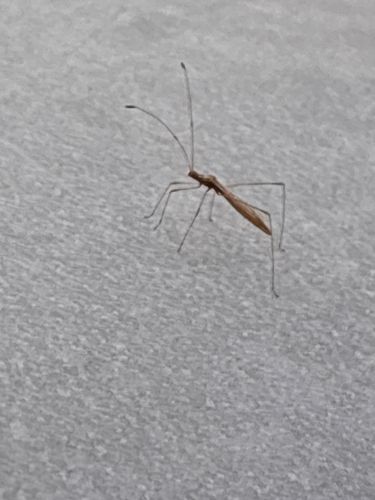Assassin Bug
Scientific Name: Reduviidae (a family of insects, specific genus/species cannot be determined from the image alone)
Order & Family: Order: Hemiptera, Family: Reduviidae
Size: Most assassin bugs range from 1 to 4 cm (0.4 to 1.6 inches) in length, depending on the species.

Natural Habitat
Assassin bugs are found in diverse habitats, including gardens, agricultural fields, forests, and grassy areas. They are often found on vegetation where they can easily find prey.
Diet & Feeding
They are predators, feeding on a wide variety of other insects, including flies, mosquitoes, bees, and caterpillars. They use their strong, piercing-sucking mouthparts (proboscis) to inject a potent saliva into their prey, which liquefies the internal tissues, allowing the bug to then suck out the contents.
Behavior Patterns
Assassin bugs are generally solitary predatory insects. They move relatively slowly while hunting, using their long legs to ambush prey or seize it. They are known for their painful bites if handled.
Risks & Benefits
Risks: While they do not typically bite humans unless provoked, their bite can be quite painful due to the digestive enzymes injected. Some species (Triatominae subfamily, also known as 'kissing bugs') can transmit Chagas disease, but the species in the image does not appear to be a 'kissing bug'. Benefits: Assassin bugs are highly beneficial in gardens and agricultural settings as natural pest control agents, preying on many common insect pests. They help maintain ecological balance by controlling insect populations.
Identified on: 8/23/2025